Currently reading
The Girl in the Tower
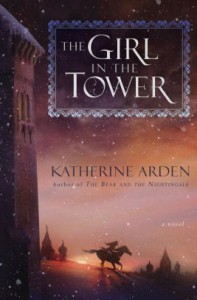
Katherine Arden does not disappoint with this second installment of her Winternight Trilogy. It seamlessly continues the story of Vasilisa as she strives to find a place for herself in a world that does not take kindly towards change and independence, despite its desire to forget the unfathomable traditions of the past. While this is a book where the charm of magic and pagan mystery tries to maintain a steadfast hold, it also does not shy away from the very personal issues of identity and belonging, as well as delve into the broader concerns of power, politics and duty.
I think that duty becomes one of the main conflicts within this story, as the characters begin attempting to reconcile their sensibilities and personal wishes with the eventual need to follow through with the tasks and responsibilities they are expected to fulfill. This holds true for both women and men, as the reader witnesses with both Vasya and her brother Sasha, as well as many of the other characters met over the course of the novel. The reader is also presented with the alternative, the individuals who have already had to assume their respective roles, forced to learn to adapt and derive a sense of pleasure from the various situations within their control.
There is a lot of truth presented in this book, and Arden does not attempt to provide simple answers to many of the questions and issues that arise. Magic can only go so far in supporting the natural order of things.
This is truly an excellent work, and I personally can’t wait for the next installment.
Copy provided by NetGalley
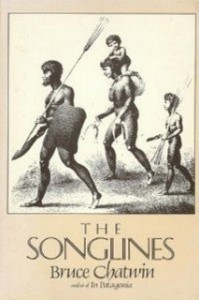
Bruce Chatwin’s book has much to offer readers of multiple disciplines…the historian, the travel reader, readers of literature and those who simply enjoy the personal anecdotes of memoirs and autobiographies.
One of the reasons why Chatwin’s book can have such a broad interest is his writing style. Chatwin’s writing is highly personable and readily engaging. It captivates and holds the reader’s interest, while conveying various facts and truths. The style is never preachy, yet he masterfully conveys a sense of biting satirical wit through some of his observations, especially in regard to potential methods of exploitation against the Aboriginal people. Yet, his own depiction of the Aborigines does not shy away from stark realism—a portrayal that in a way reflects the Australian landscape.
His writing is visual. He adeptly portrays his surroundings and the various characteristics and mannerisms of the people with whom he interacts, allowing the reader to obtain a complete picture within the mind’s eye. Through his rendering, the Aboriginal songlines, or dreaming tracks that represent the footpaths and journeys taken by the totemic beings of the creation myths, become vibrantly alive. The positioning of various elements—land, wind, light, water—work together to help you visualize or “read” the movement of, for example an ancestral lizard, as described in one of these dreamings. The land itself may be stark and harsh, yet it is teeming with a lifelike expression that’s full of majestic beauty and wonder.
As Chatwin notes, these dreamings are highly personal—an essential part of the self in Aboriginal culture. Their essence becomes a study of origins and nature—a study that Chatwin readily takes to heart. The latter part of the book draws on Chatwin’s own personal experiences and past interactions that hold similarities to the aboriginal journeys he has described. Chatwin’s reflections on origin and self, and the many journeys and experiences he has faced become a personal songline that he has come to gradually cultivate over time…an illustrative story full of personal highs and lows, paired with a kind of personal struggle of self-expression evident in his prose. Yet in the end, his “songline” reflects a kind of hope in this quest for knowledge and understanding of self in relation to one’s surroundings—a hope based upon the basic fundamentals of human nature.
Copy provided by NetGalley

In Sweet William, Beryl Bainbridge takes the darkly comedic tone that she previously used in her novel The Bottle Factory Outing and turns it into something even more bitingly ironic and disturbing. This marked change is in part due to the focused subject matter of this novel. The novel’s unassertive protagonist, Ann, finds herself swept up into a bizarre relationship with a playwright, despite being engaged to a professor.
I think the comedy of this novel in part stems from the fact that Ann has somehow caught the attention of two relatively intelligent and academic men, despite the fact that she is relatively dull and mousy in comparison. In some ways, she is very much like Bainbridge’s character Brenda in The Bottle Factory Outing. Essentially, Ann is a soft touch. Yet perhaps it is Ann’s unworldly timidity that makes her an easy target for William’s dominant perceptions and cajoling ways.
Throughout the novel, Ann is described as lofty…someone in a constant state of befuddlement and stubborn confusion. However, this almost dreamlike hypnotic state can’t entirely be attributed to William’s presence alone. Her interactions with her mother and her fiancé Gerald at the novel’s outset also convey that same lack of clearheadedness. While Ann could arguably be described as a naive innocent, her inflexible willfulness undermines her irreproachability.
That said, Ann does experience moments of sudden awakening…moments where she recognizes that something is not right and will act on impulse to correct the situation. However, these steps are only half-heartedly made, since she ultimately finds herself reverting back to and accepting the way things were…the prior dreamlike fantasies preferable to the stark and barren reality she must face.
The story itself can be quite disturbing to the reader, especially considering how easily it was for Ann to fall into this dependent relationship with William. From a psychological standpoint, however, the novel makes for a compelling study, especially considering Bainbridge’s later admission that William’s character was in part modeled after her ex-lover Alan Sharp. Another asset of the book is Bainbridge’s adept use of irony. Her verbal attacks are always on point. Even a baby’s cry is used to maximum effect, yielding a strong final commentary regarding what has come about and what perhaps will come to be.
Copy provided by NetGalley
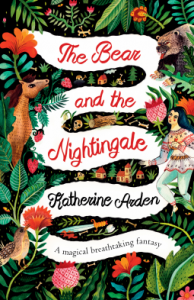
As Katherine Arden herself states in her author’s note at the end of The Bear and the Nightingale, she does take some liberties with Russian names, as well as the history in which her story takes place. However, her capable storytelling allows the reader to set aside this knowledge and simply enjoy the story she has created.
Arden’s novel is visually detailed. It is easy to picture the setting and the various set pieces of this story, from Pyotr Vladimirovich’s great house and the Grand Prince’s vast hall adorned with a heavily laden dining table, to the great battle scene that rounds out the story at the novel’s end. The story juxtaposes images that trick the reader’s sensibilities. What initially appears to be a stark, blank canvas, is actually teaming with abundant and colorful detail. Even the shadows that lurk through Konstantin’s bed chamber offer essential insights not only in terms of plot, but in terms of the internal conflict that faces Konstantin as well.
While a reader might think that such attention to detail might hamper their enjoyment of the story, that is not the case here. Arden’s prose flows easily. Her descriptions become part of the action, supporting the characters and their interactions with each other. When characters are talking, it’s fun to also picture on the side a little domovoi, or house elf, sitting by a clay oven with a long, smoking beard, munching on burnt crusts of leftover bread. The folkloric elements complement the realistic aspects of the story well. The characters have real presence. Their various conflicts are very natural and real, despite the supernatural elements that are ever-present. The petty jealousies, fears, fervent devotions, honest love of family and daily toils help ground and balance the novel, maintaining the reader’s interest throughout.
While the story is entertaining, some readers might balk at the novel’s somewhat abrupt ending. Though there is a definite conclusion, Arden leaves some details open-ended, enough to make a potentially satisfying sequel. After reading and conducting some research on Katherine Arden’s website, she states that this book is the first of a trilogy—information I did not know prior to reading. In truth, I’m glad and can’t wait to revisit the feisty Vasya and her folkloric world, and perhaps see further intrigues related to the ever troubled Konstantin.
Copy provided by NetGalley
 1
1
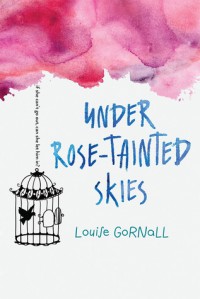
In Under Rose-Tainted Skies, Louise Gornall is at her best describing the physical and emotional anguish her protagonist, Norah, faces as part of her daily existence as a teenager living with severe agoraphobia and OCD. These feelings are vividly real and are intimately expressed through the use of a first person narrative. The writing is honest and open, with no shying away from describing the ugly—those moments when impulse is rationalized and takes control over reason. A simple stimulus can easily mushroom into a full blown attack of the senses, jarring reality into a kind of nightmare. Everyday situations people take for granted, like saying hello, become feats that are nearly impossible to complete. As the novel shows, developing a friendship with Norah requires an enormous amount of calm and patience; and the novel provides a fairly realistic portrayal of what could happen when the patience of a teenage boy is stretched to the breaking point. Norah’s story is empathetic and invites the reader to engage in a thoughtful reflection as the novel progresses. In this respect, because of its focus on a specific area of mental health, Gornall’s novel serves as an important addition to young adult literature.
However at times, the novel takes a few liberties in regards to plot in a way that does not seem entirely plausible, given the age and medical condition of our main character. These details are not entirely necessary and might affect some readers’ enjoyment of the novel’s realism, for instance, the long periods of being left home alone and other issues concerning time, specifically the juxtaposition of the amount of time spent on school work vs. the increased amount of time spent on other musings and obsessions, in light of the fact that Norah is an academic and wants to maintain a 4.0 GPA. The time balance here is not effectively met. Additionally, it is somewhat surprising that the shocking denouement that leads to Norah’s moment of catharsis does not develop any additional feelings of introversion or immediate fears associated with the event. The resulting ending is entirely optimistic, which is nice. A more skeptical reader, though, might not view this turn of events in such a positive light.
Despite its faults, Ms. Gornall has penned an insightful thought provoking first novel, and I look forward to reading additional works by her.
Copy provided by NetGalley
 1
1

Shaw’s book is essentially a brief log describing a summer family sailing trip across the Mediterranean during the early 1960s. Each chapter offers a brief journal-like description of a particular stop along the journey, which took the family across southern France, Italy, Greece and Yugoslavia. Rather than providing a traditional guided reflection of noteworthy sights and sounds, Shaw offers simple impressions of place and snippets of his personal interactions with various locals, as well as named and unnamed celebrities.
The book reads like a scrapbook of reflections. The reader can’t help but picture Shaw himself revisiting this journal, looking back and reminding himself of this place and that, strange encounters and the fun had by all. Some descriptions are purposefully left obscure, yet are still retained. There is personal significance in what’s stated, and because of this, the reader can at times feel left out of the loop.
However, Shaw’s book does provide important insights into foreigner-native exchanges and how these interactions are affected by the class distinctions present during the mid-twentieth century. In this respect, Shaw’s little journal holds an important significance for the modern scholarly reader.
Copy provided by NetGalley
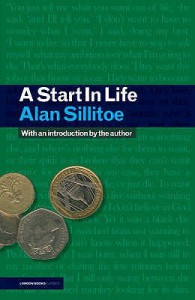
Michael Cullen is a scoundrel and knows it. As he tells his story, he doesn't attempt to protect his self-image by portraying himself as a wholesome victim of circumstance. He simply does whatever he needs to do when he needs to do it, and is not shy at admitting defeat to us his readers. Yet despite his various failings, like a cat with nine lives, Michael somehow manages to right himself in the end.
This is very much a young man’s story, with a heavy focus on women and finding ways to make an easy buck. His various encounters and reencounters with women are frankly audacious, yet they serve as perfect examples of Michael Cullen’s ability to lie and charm his way into and out of any situation. In this respect, Michael Cullen’s character does make for an interesting subject for study.
As with other traditional picaresque novels, A Start in Life doesn’t have much of a plot and is presented as a meandering series of events that are somehow miraculously tied together. Coincidence also plays an important role here, helping to tie the various stories and characters Michael meets into a more meaningful and convincing whole. Yet, the novel itself is not as thematically strong as Sillitoe’s later Michael Cullen novels, especially the posthumously published Moggerhanger.
Readers new to Alan Sillitoe might prefer his earlier, more famous works, namely Saturday Night and Sunday Morning. However for readers who have sampled this first novel in the Michael Cullen series and were not as impressed by this work, I would suggest trying Moggerhanger. It’s the work of a mature author with a maturer narrator. While this story too meanders, it offers much more interesting themes and ideas for thought and discussion, ultimately taking the picaresque novel into the twentieth and twenty-first centuries.
Copy provided by NetGalley

Having the knowledge that Beryl Bainbridge’s novel was shortlisted for the Man Booker Prize and the understanding that the novel was listed as one of the 100 greatest novels of all time by The Observer can consciously and unconsciously color the reader’s immediate expectations when approaching her novel for the first time. Such expectations would most likely be high. But having such high expectations beforehand might lead the reader to become overly critical in their reading, and thereby potentially lose the respect Bainbridge’s novel deserves.
Bainbridge’s novel is best described as a madcap satire, not the kind of story one would immediately associate with such a lauded book. The pairing of British flatmates Freda and Brenda within the setting of a bottle factory during the 1970s has an American counterpart with the relationship between Laverne and Shirley. Like the many adventures Laverne and Shirley experience, the escapades involving Freda and Brenda are not meant to be taken seriously, often involving crazy solutions to the various problems they face. As a result, these situations are funny in the sense that they’re so fantastical and unrealistic. Bainbridge’s novel is meant to be read this way as well.
Yet at times, Bainbridge can make this difficult, by actively playing with the reader’s sensibilities. When her novel transitions into a kind of murder mystery, something akin to Hitchcock’s The Trouble with Harry, she takes turns that could easily be read as excessive, at times even bordering on horrific, sentiments that are only heightened by the vividness of her writing. Part of her dark, comedic satire plays with readers’ preconceived notions of what’s real and unreal through her use of outrageous exaggeration. While the turn of events is not entirely unexpected given the imagery and tone associated with the novel’s opening scene, the contrast of melancholy tradition and its highly irregular variation at the novel’s close is not an image that’s easily forgotten.
The novel’s dark humor is aided by the quick pace of Bainbridge’s storytelling. One scene flows readily into another, and she adroitly groups the characters in interesting ways. Yet despite the story’s speed, Bainbridge somehow manages to create lasting comedic images within the mind’s eye. This is in part due to her characterization of her novel’s cast of characters and the way she dispels information. She is clever in her use of detail, offering just enough to entice and even beguile the reader. The novel ends with a stated confession of guilt. However, Bainbridge offers enough details that can allow the reader to question the veracity of this potentially neat conclusion. In a way, Bainbridge seems to also be satirizing the traditional endings readers usually associate with British mysteries. She arguably allows the reader to assume the role of detective to more effectively determine what really happened during that outing.
One might not expect much from a short madcap satirical novel, yet Bainbridge has provided readers with an interesting and solid work.
Copy provided by NetGalley
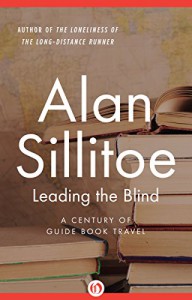
Readers who are familiar with literature of the eighteenth, nineteenth and early twentieth centuries have probably heard about the Grand Tour, a kind of educational right of passage for the young and wealthy. Some readers could probably even name the titles of some of the guidebooks these travelers used to support their appreciation of the countries they happened to be visiting. E.M. Forster perhaps makes one of the most memorable accounts of their use in his novel, A Room with a View:
If you will not think me rude, we residents sometimes pity you poor tourists not a little—handed about like a parcel of goods from Venice to Florence, from Florence to Rome, living herded together in pensions or hotels, quite unconscious of anything that is outside Baedeker, their one anxiety to get 'done' or 'through' and go on somewhere else.
As shown by Forster, travel guides like Baedeker’s did not have universal appeal, especially for those who believed that such books took away from the traveler’s ability to actually see and experience the culture of the countries they visited. While there is some truth in this, as Alan Sillitoe illustrates in this work, these travel guides can also provide some fascinating insights and anecdotes, as well as some potentially useful information and tips for the inexperienced traveler.
The chapters of Sillitoe’s book focus on prominent locations for the Grand Tour, providing overviews of how various guidebooks of the time presented these locales, referencing local cultural legends, prominent landmarks, as well as informational tips concerning passports (when they should be obtained and where), how to approach customs agents (be prepared to offer a tip/gift), hygiene management (the addition of spirits into drinking water to ward off disease, warnings to stay indoors at night to avoid insects) and the like. The guidebooks are quite engaging through Sillitoe’s presentation; and it is interesting to observe how local legends change over time with the added sensational embellishments that give those original tales their legendary status. Sillitoe’s inclusion of guidebook quotes allows readers to gain insights into the conversational tone of these books, which most likely enhanced their popularity. As well, the quotes also provide strong evidence of the Victorian imperialistic ideology that was heavily present during the time…the superiority of the educated foreigner over the primitive and potentially uneducated natives and peasants of the land.
Overall, Sillitoe’s history provides an intriguing overview of nineteenth and early twentieth century guidebooks. His engaging presentation could interest any reader and perhaps encourage them to pursue a more scholarly study of the original source materials.
Copy provided by NetGalley

In a way, Howard’s novel follows a stylistic format similar to picaresque novels, namely how the hero faces a succession of wild, life changing events told in quick succession. However the novel’s protagonist Gavin is a far cry from the traditional picaresque, roguish hero. Gavin is essentially a soft touch, easily dominated by all he meets and knows, even his best friends. He is surrounded by dominant personalities who readily recognize his kindly, shy ways and are ready to take advantage of him. While he is portrayed as a likable hero, the reader can’t help but feel frustrated at the way Gavin is drawn into all of these various, crazy scenarios.
Though Gavin does hope to get things right in the management of his life, the dominance of everyone else arguably negates this attempt. Within a span of two weeks, he meets three women, all of whom are perplexingly strange. Like Gavin, all three are vulnerable, yet their respective simple, single-minded and at times destructive tendencies hold fast and easily dominate. Minerva and Julia play their own fantastical games, which are destructive not only to themselves, but have a far reaching negative presence as well. On the positive side, Julia initially plays a kind of Henry Higgins role with Gavin that does have a positive effect for him, since it gives him the confidence to pursue a similar Pygmalion role with his junior work apprentice Jenny. However, Jenny is the girl of the rolling eyes. She’s not very knowledgable, is insufferably naive, lacks sophistication, common sense and an independent initiative. At times, even Gavin is floored by her admissions and responses to his attempts at developing her appreciation for the fine arts. She is certainly not his intellectual or emotional equal, and based upon her portrayal, there is not much hope for any significant growth. By considering a potential relationship with her, he would effectively assume a childlike dependent who happens to have a child of her own.
Howard’s novel is meant to be a charming comedy. However, the characters and situations that are portrayed are too dark to be effectively balanced by the comedic lines that are interspersed throughout the novel. While the novel could interest readers who enjoy stories that chronicle atypical, psychological behaviors and relationships, and the lengths people will go to continue being a part of the “game,” readers seeking a light romantic comedy might be disappointed.
Copy provided by NetGalley

Well, what a ride! Alan Sillitoe’s posthumous modern picaresque is quite the adventure. It’s frank and unapologetic, full of chaos, craziness and a devoted willingness to flout convention against the reader’s moral sensibilities.
A reader can readily trace character similarities from Sillitoe’s earlier works in his picaresque hero, Michael Cullen. Michael Cullen holds that same audacious, devil-may-care approach to established social conventions, comparable to Arthur Seaton in Saturday Night and Sunday Morning and Smith in “The Loneliness of the Long Distance Runner.” Michael simply wishes to live his life on his own terms. And like Arthur Seaton, Michael recognizes the importance of finding fun, amusement and good nourishment along the way.
In terms of plot, the novel itself is reminiscent of Henry Fielding’s picaresque, Tom Jones, with the combination of food references and bawdy humor. Fielding metaphorically equates love with food:
Love, namely, the desire of satisfying a voracious Appetite with a certain Quantity of delicate white human flesh […] he LOVES such and such Dishes; so may the lover of this kind, with equal Propriety say, he HUNGERS after such and such Women.
Sillitoe’s Michael Cullen essentially embodies this idea. For him, a woman is simply one of the essentials of life. No matter the journeys and veritable dangers he faces, it is always important to make time to enjoy this particular pleasure of life, regardless of any ties and constraints that may exist. As with the character Tom Jones, Michael faces a similar potentially incestuous dilemma. However, the 260-plus year discrepancy in publication between the two works has negated the need to clear up any such moral scares. For Michael Cullen, the discovery and realization is only something to relish…and to willingly and wholeheartedly try again to better savor the associated pleasures.
However Michael himself notes, It would be hard enough to get the truth out of myself if ever I wanted to, in which case how can you trust somebody to tell the truth to you? With such an admission, the reader can’t help but wonder if there’s a postmodern element to this modern picaresque: the act of the reader reading a fictitious work full of various fictions…various individual personal conceptions of reality for us the reader, as well as for our picaresque hero.
The novel itself is composed of a variety of situations and adventures that pile upon each other, as is common with the traditional picaresque. There’s no real plot, but these adventures run at a frenetic pace. Yet, the sheer fact that there are so many adventures, paired with the fact that the progression of them is placed on hold at key moments with a narrative shift, seemingly slows the progression of the novel. Completing this novel makes the reader feel as if they too have taken part in an arduous journey. While Moggerhanger does offer the complex themes and ideas of a well-seasoned author, new readers would most likely prefer Sillitoe’s early, more recognized works.
Copy provided by NetGalley

A reader might approach this novel thinking it’s simply one of those run of the mill teen contemporary stories that discusses traditional teen issues and offers a sensitive, if not uplifting resolution. But actually, Mills’ novel is a cut above the rest. Even though the novel deals with those traditional topics of family discord, parental death, confidence issues and budding relationships, they are presented in a way that allows readers to forego noting the obvious similarities found in comparable literary works (i.e., “Uh, this book is just like…” or “Oh, this same thing happened in…”), in favor of simply enjoying the various journeys Mills’ characters take over the course of her novel.
As the novel progresses, Mills’ characters face many emotional obstacles, obstacles that are in part overcome by the characters’ budding friendships. Friendship is presented in a very natural way as it evolves across the story, and the novel does not shy away from describing friendship’s inevitable highs and lows. The presentation is enhanced by the novel’s dialogue. Character interaction is wonderful here; the novel is full of witty banter and entertaining one liners that at times help to assuage some of the more tensely emotional scenes that occur.
However, not all of the relationships presented in this novel are actively involved in open forms of communication with each other. Sloane, the novel’s protagonist is lucky in having a supportive father, a confidant akin to a best friend. Vera and Gabe’s relationship with their father, on the other hand, is at an impasse. While the novel offers them a potential understanding of their father’s actions, it’s left to the reader to decide what may happen with their strained relationship. These juxtaposed interactions work well in presenting a truly authentic and natural story that helps ground the novel, assisting the actual adventure the protagonist embarks upon, which at times attempts to stretch the reader’s imagination.
Despite this one flaw, the ending is supportive of the overall realistic tone of the novel. The novel does not attempt to solve all of the problems that are introduced. Instead, even though the adventure ends for us as readers with those final few pages, the adventure is still very much ongoing for the characters. All in all, this is a highly enjoyable novel that should attract many readers.
Copy provided by NetGalley

The titular story of this collection is again most readily associated with the 1962 film of the same name starring Tom Courtenay, Michael Redgrave and James Bolam. Unlike Sillitoe’s novel, Saturday Night and Sunday Morning, this story more blatantly encompasses the ideas surrounding the Angry Young Men movement. The story itself is essentially a letter mainly addressed to the governor of the borstal the narrator was sent to for robbing a bakery. The story recounts the reasoning behind the narrator’s refusal to yield to the governor’s conventional understanding of “honesty” and “winning” for which the narrator has no respect. Sillitoe’s storytelling immediately engages the reader; however Sillitoe does not hide or shy away from the various inconsistencies present in the narrator’s philosophy and personal understanding of “winning”, given the reader’s understanding of the circumstances in which this story was made available to the reader to read. This story itself is best paired with the film, especially since Sillitoe himself penned the screenplay, to note the various differences and shifts he made to his story.
This initial story introduces the subject that connects all of the stories within the collection, namely relationships and the associating spectrum of sentiments, loyalties, and fascinations felt by the variety of main characters to whom the reader is introduced—from the very young to the very old. The stories all deal with dark subject matter portrayed through stark realism. A kind of obsession overtakes all of the characters portrayed in these stories, an obsession driven by their relationships and interactions with others. At times this obsession tends to obscure the storytelling, though this reflects the inner confusion or turmoil felt by the main characters. It is through this confusion that convention is broken.
The best stories are those told from the perspective of a child, such as “On Saturday Afternoon.” These stories are told with an honest frankness that reflects the child narrator’s naive innocence. The stories are told with a tone full of pride, describing what’s witnessed and experienced as an important rite of passage in one’s youth, akin to children proudly displaying scars earned in battle.
The stories with adult narrators are not as clearly presented. As in “Mr. Raynor the School Teacher,” the facts are purposefully obscured due to the narrator’s own obsessed fascinations and fantasies, which are burst when the truth of the situation is revealed. The adult narrators layer their stories wth truths and half truths due to their desire to wish for something more, which is often based upon what they’ve observed through their relationships with others.
This is a strong collection of stories that will be enjoyed by readers who have previously read other works by Alan Sillitoe. New readers should probably start with his novel Saturday Night and Sunday Morning.
Copy provided by NetGalley
 1
1

Modern readers may probably readily associate Alan Sillitoe’s 1958 novel with the 1960 film starring Albert Finney. Interestingly, both novel and film are notable contributions to British literature and film. Saturday Night and Sunday Morning is categorized as being part of the Angry Young Men movement of the 1950s-early 1960s; the movement which also spilled into filmmaking with the British New Wave—those black and white “mod” films filled with real locations and real people, in essence challenging how traditional studio films were made. Sillitoe’s novel also plays with tradition, challenging social conventions—the idea of settling down through marriage, the dedicated respect felt towards one’s work, duties and obligations—in favor of a carefree, unattached lifestyle.
Open Road Media’s edition of the novel ends with an Afterword by Sillitoe’s wife, who states that her husband did not care for the”angry young men” label to his novel. By taking the literal meaning of the phrase, Sillitoe’s reluctance for the label is understandable. The novel’s main character, Arthur, is the antithesis of someone who is driven by anger. Arthur embodies a kind of naive, childlike innocence. He is someone who is immediately drawn to any experience that would maximize his pleasure and happiness. He enjoys fun and play, and it’s through this enjoyment that he’s willing to test boundaries to see how far he can go without exacting any negative consequences back onto himself.
There is no formally expressed anger towards the established order. Any anger incurred is the result of having been caught or “burned” from his various tests; and even then, these moments are fleeting, easily pushed aside in favor of a new challenge that would reap a more beneficial reward.
This is a highly fun and amusing read. Sillitoe was clever in this method of storytelling, since it sets up the reader to easily forgive the main character’s many foibles and predilections for trouble. Part of Arthur’s charm stems from his audacious, unapologetic behavior. It’s frankly amazing how he gets away with the things he does. It is likewise astonishing to see how readily he rights himself once he faces a fall from grace.
The novel’s lighthearted tone also allows Sillitoe to address some weighty and potentially controversial subjects from abortion to unsanctioned leaves from military service. Sillitoe masterfully navigates his way through these subjects, careful not to portray them in a way that would immediately condone the offense. Punishments are served, though they are cleverly presented in a way that does arguably play with convention. Also remember, Arthur is largely unchastened throughout the novel.
Saturday Night and Sunday Morning is a novel that should not be missed. As a side note, the film adaptation perfectly complements the novel, since the screenplay was adapted by Sillitoe himself. Albert Finney’s portrayal of Arthur wonderfully suits the character; it’s a great pairing.
Copy provided by NetGalley
 1
1
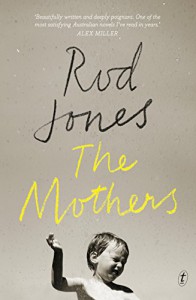
An entire spectrum of sentiments and feelings can be associated with the word “mother.” One’s attempts at defining the term is strongly linked to one’s personal experiences, whether they be positive or negative. However by selecting the title, The Mothers, I would think that many readers would initially assume that the novel would describe a favorable position of motherhood…a kind of homage and celebration of a mother’s strength and fortitude in supporting her children’s wellbeing and welfare against any hardships that are faced. If by looking at the title alone and thinking that the novel might make a promising Mother’s Day gift, it might not invoke the positive reaction you were seeking.
The novel chronicles four generations of mothers, from World War I to the 1990s, all of whom eventually become part of an interconnected family. The author Rod Jones firmly entrenches his novel within a historical context. The four generations of women are set in a background of varying levels of political, social and environmental calm and upheaval. However, all of the women he describes are somehow emotionally distanced from these periods of change; their reactions to situations are remarkably similar despite the social differences occurring during their respective timelines. This similarity does a disservice to the stories of these women, who ultimately seem products of an older generation in regards to their relationships with their children and, more importantly, their men.
Despite the novel’s title, The Mothers strongly focuses on the women’s relationships with men, rather than their relationships with their children. At times, it almost feels as if the title The Mothers is a misnomer. In truth, the novel assumes the old-fashioned belief that children are better seen and not heard. At various points in the story, the reader can “see” the children out playing, attending school or going to work. Other times, the children are actually visually absent from the story because they haven’t yet been born. For the most part, the children are not involved in the active verbal conflicts associated with the four main female protagonists, which creates a noticeable distance between mother and child in all four sections of the novel.
Additionally, even though the author introduces some themes associated with these children, they are not fully realized over the course of the novel due to the story transitions. For example, two of the children who are introduced in the first section of the novel, essentially disappear in the other sections when the author shifts focus to new storylines. Though these children do make brief appearances in the later sections, the themes that were initially introduced, namely Teddy’s emotional reticence and growing sense of disappointment and loss are quietly forgotten.
There is minimal verbal interaction between mother and child across the novel; and at some points, the mothers seemingly want to distance themselves from addressing any potential conflict with their children. For these mothers, such crisis moments are best resolved by sending the child away, offering the child phenobarbitals, or potentially considering imposing a forced separation between herself and the child. Ultimately, it becomes apparent to the reader that it is not really the women’s role as a mother that drives their decision making, but it is the the male figures in their lives that truly guide the choices they make as mothers.
The four mothers of this novel lack a strong, independent will, and are heavily dependent upon the assistance of men. When this dependence is severed, the women are cast adrift, either looking to the past to find grains of comfort, or to seek some other male replacement, whether consciously or unconsciously, to fill that empty void, rather than attempt a life of independence with their children. Such choices are made regardless of the relative danger and instability associated with making such a choice, both for themselves and for their children.
The first mother to whom the reader is introduced actually describes her hesitance in wanting to accept charity, yet she does not actively consider looking for a job, even the most menial position. She ultimately elicits the help of two other men. The second mother is described as being rather childlike in demeanor, and is heavily dependent upon her husband for support and assistance. Arguably, it almost seems as if the male figure in this particular relationship assumes a mother bird-like protectiveness. At a later point in the novel when this woman becomes a widow, she is described as being “still stuck back in 1969, where the solid road of her family life had come to a sudden end.” In another section of the story, the empty void is so extreme that this mother resorts to turning Humphrey Bogart’s Charlie Allnut character in The African Queen into a god-like figure to whom she prays for assistance and strength. This woman eventually again relies on the advice and guidance of another man to determine the course of action she should take when provided with the opportunity of resuming a relationship with a lost child. The final mother figure to whom the reader is introduced is shockingly passive and submissive, which is a blatant contrast to the 1970s women’s liberation timeframe in which she is living. Her partner is emotionally abusive and distant, yet since he is the father of her unborn child, she cannot envision a life separate from his. All in all, the four stories that the author describes force the reader to question the degree of responsibility these women have in their role as mothers.
In the book’s favor, Rod Jones’ novel does provide a distinctive voice for each of the mothers he describes. Each of the four sections employ a subtle technical change in style that is reflective of the character traits of the four mothers. The first section is a story that is plainly told, which reflects the dispassionate nature of the first mother he describes. The second section assumes a simple, unadorned way of writing. Description is minimal and lacks an imaginative maturity that is reflective of the mother he describes. It is rather difficult for the reader to learn much about this woman based upon what is described, other than this woman’s childhood fears, fears that she also extends to her understanding of others. The third section adopts a dreamlike stream of consciousness. Of the four sections, the author provides a tone that is arguably almost affectionate and sympathetic in its description. The situation in which this mother is placed is hopeless, yet it hints at a potential sense of healing that contrasts the growing sense of absurdity that follows her train of thoughts as her story progresses. The fourth section in contrast lacks a true sense of hopefulness, and is instead a study of negative contrasts and dichotomies. Despite this mother’s lack of advanced education, her story is replete with astute, intelligent commentary. However she seemingly fails to apply this intelligence to herself and her own situation. She remains blindingly optimistic despite the many warning signs that come her way.
When reflecting upon Rod Jones’ novel as a whole, his novel does have technical merits in its tone and section construction. However when the reader breaks down the stories he describes in their most basic form, the novel is essentially four retellings of the same tale: a woman who needs a male figure in her life to help balance her responsibilities and duties as a mother. The underlying message Jones leaves his readers is not entirely favorable; and with the knowledge that the novel is semi-autobiographical, one wonders what Jones is really trying to say here.
Copy provided by NetGalley
 1
1

This is a fairly intriguing turn of the century cautionary tale that in a way reminds me of the tv series Ballykissangel, namely the damning fate of Assumpta Fitzgerald when she falls in love with a Catholic priest. Though here, the main character Isabel falls for a married man.
This isn’t a true love story. It shows how one can romanticize a tale to a point beyond all sense and reason, creating an infatuation that’s based on a bunch of fluff. The resulting obsession negatively affects any potential positive outcomes Isabel could have had with the other men she has met.
The story also reflects upon the sad lack of options available for an educated or “finished” woman with little to no financial backing. The best choices available for such a woman would be an advantageous marriage or the convent; anything else would demean her current position in society. However, the story also cautions what could happen to the current “it” girl in society, if she can’t secure a successful match within a season or two. Beauty and interest can fade fast when a new group of ingenues is being introduced in the new season.
The novel offers an ironic, sensational ending that easily solves the main conflict. The ending does have the potential of reinforcing the idea that life will go on despite any uncomfortable hardships that can momentarily obscure the natural order of things. This ironic turn is reminiscent of the themes you might find in early nineteenth century French novels, especially Balzac’s stories and novellas.
 1
1





